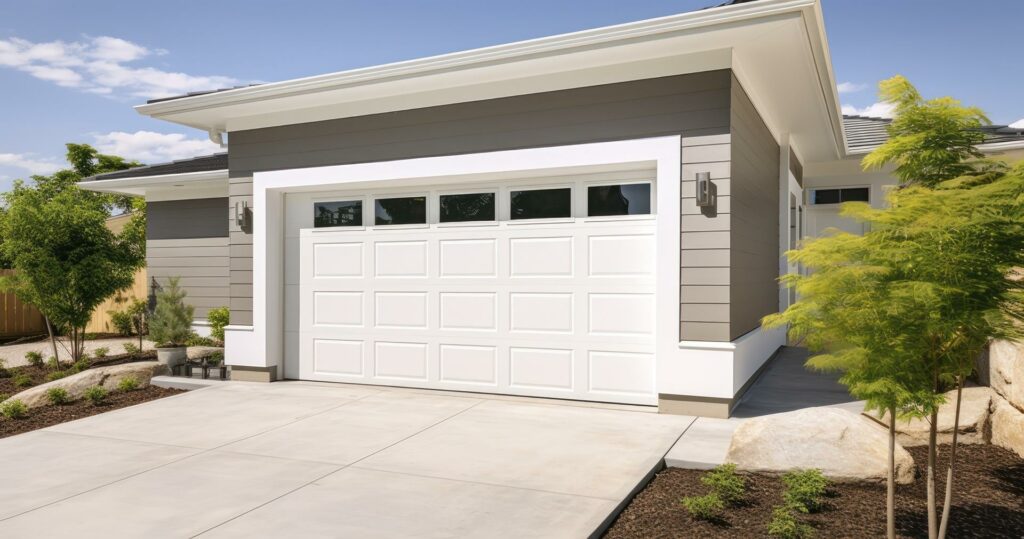Garage doors are an essential feature of any residence, offering both security and convenience while enhancing curb appeal. As mechanical mechanisms, they require regular maintenance and occasional repairs to operate efficiently. For many homeowners, however, undertaking garage door repairs is daunting. Most common issues you might encounter can be handled on your own provided that you know just what to do and have some patience. The following guide will help a beginner with some DIY essential garage door repair tips that can save time and money.
Whether the door won’t open, makes strange noises, or has a minor alignment issue, the solutions are often straightforward. As John Carter, the expert on Garage Door repair Surrey, states, learn the basics, and you’ll be able to address minor issues before they escalate into costly repairs.
Understanding the Basics of Your Garage Door System
Before starting repairs, a basic understanding of how your garage door system works will help. Most garage doors work through a system of tracks, rollers, springs, and cables that help raise and lower the door in place. An electric opener may be used, but the actual lifting can be done by tension springs or torsion springs, which store and release energy to move the door.
Since garage doors are heavy and rely on high-tension parts, safety should always be the number one concern. If there is any type of repair that you’re undertaking that includes springs or heavy components, don’t hesitate to seek help from a professional instead of getting hurt.
Addressing Noisy Garage Doors
A lack of lubrication usually causes these noises. Over time, the metal parts on your door can become dry and rusty; this builds up friction while the door moves.

To do this, just spread some silicone-based lubricant on all the moving parts. Keep in mind not to use heavy grease, for this may attract dust and debris that can give way to more problems. After having applied the lubricant, just cycle the door a few times to distribute it well, and the noise will be significantly reduced.
Dealing with Track Misalignment
Another common problem involves track misalignment; this can cause the door to jam or to move erratically. If your garage door is refusing to open or close smoothly, check that the tracks are free from bends or gaps. Sometimes, a loose bolt may cause the track to shift slightly, and you can easily fix this by tightening the bolts holding the brackets of the track in their place.
For more serious misalignments, you can tap the track back into place using a rubber mallet. Be very careful not to apply too much force, which may exacerbate things. If the track is badly damaged or out of alignment, you are better off seeking expert advice rather than risking further damage to your garage door system.
Fixing a Garage Door That Won’t Open
Few things are more frustrating than a garage door that won’t open, especially when one happens to be in a hurry. Some of the causes for this problem vary from trivial as power loss to a broken spring. Start by trying your garage door opener. If the opener does not respond with the power on, try replacing the batteries in your remote control or resetting the opener itself.
If you suspect that the issue might revolve around one of your door springs, you will want to exercise a bit of caution. A broken torsion spring makes lifting the door very heavy; if that is the case, you will need to call a professional since fixing garage door springs requires specialized tools and can be dangerous without proper training.
Ensuring Regular Maintenance
While many of the common garage door issues can be overcome by DIY repairs, regular maintenance is vital to keep your system running smoothly.

Performing a visual inspection every few months can make all the difference in recognizing potential problems early on. Look for signs of wear and tear on rollers, springs, and cables. Make sure to tighten any loose hardware and ensure the tracks are without debris.
Also, while testing the balance of your garage door, you are ensuring that the springs are in good condition. Unhook the opener manually and raise up the door halfway. If it stays, your springs are fine; if the door falls, the springs may need adjustment, which should be done by a professional.
In Closing
Tackling garage door repairs yourself can be both rewarding and cost-effective, especially when you have the right knowledge. From the elimination of minor noises to the management of misalignments, little things that you can learn about your garage door system will enable you to solve small problems before they become major ones. But, of course, be always safety-minded and know your limitations—some repairs, especially those having to deal with springs, are best left in the hands of experts. With regular maintenance and timely repairs, your garage door will continue to function efficiently year after year.

